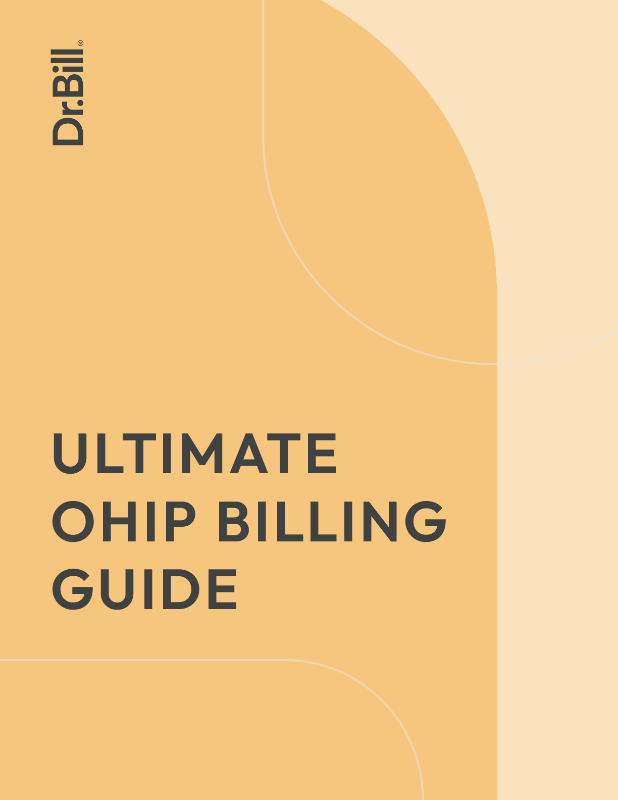With overhead costs rising and administrative duties going largely unpaid, capturing all billable time is critical for Ontario physicians. These 3 tips can help ensure you bill more completely for the time you’re spending on patient care:
TIP 1: Add Applicable OHIP Fee Premiums
If you don’t bill applicable OHIP premiums on top of your regular fee codes, you could be doing a lot of work you’re not being paid for.
Here are 3 of the most commonly missed OHIP fee premiums:
1. OHIP Special Visit Premiums
- Special Visit Premiums can be applied to non-elective (urgent and emergent) consults and assessments.
These premiums act like a bonus on top of regular fee codes and are incentives for physicians who have specific specialties or sub-specialties. You’ll also benefit from them (at varying dollar amounts) if you work weekends, nights or holidays.
There are 3 scenarios where Special Visit Premiums apply:
Travel Premium
When you travel from any place other than the hospital where the service is performed.
First Patient Seen
Applies only to your first patient. (If your shift goes past midnight, you can bill it again.)
Additional Person(s) Seen
Applies to each additional patient after you’ve billed your first patient.
See our complete list of special visit premium codes and associated dollar values.
2. The Chronic Disease OHIP Fee Premium (E078)
Many chronic diseases can require more physician time and care. This percentage-based OHIP premium adds an extra 50% onto the base fee code and is payable on certain outpatient assessments.
For example, if you are assessing an outpatient due to hypertensive heart disease (or a complication due to the condition), you should not only bill A263 for a Medical Specific Assessment, but should also add E078 (the Chronic Disease Premium) to cover the added complexity of that assessment:
| Code | +50% Premium | Total |
| A263 ($77.70) | E078 (+$38.85) | $116.55 |
E078 can only be used by certain specialties on qualifying chronic conditions. Learn more about which specialties can bill the Chronic Disease Premium and how to apply it.
3. Most Responsible Physician (MRP) Premiums
Many physicians forget to bill MRP premiums, which add 30% to certain consultation, assessment and subsequent visit codes.
The MRP is the physician who admits a patient to hospital. The following premiums are an important part of compensating physicians for the additional work that typically comes with being the MRP:
| Code | Explanation |
| E082 | This code can be added to an admission consult or assessment and is allowed once per admission. |
| E083 | This premium can be added to subsequent visits. |
While we’ve covered 3 of the most commonly forgotten premiums here, various other specialty- and procedure-specific OHIP premiums may also apply to your work. If you are a Dr.Bill user, you will see automatic premium alerts that proactively let you know when a premium may apply to your claim.
TIP 2: Bill for Telephone and E-Consultations
- Doctor-to-doctor telephone consultations as short as 10 minutes in duration are eligible for payment by OHIP.
- Many doctors regularly engage in these consultations, yet neglect to bill for them, which adds up to a lot of unpaid work.
Both the referring physician (the doctor who initiates a call) and the consultant physician (the doctor who receives the call) can bill OHIP for telephone and e-consults as follows:
| Referring PhysicianCode | Consulting PhysicianCode | |
| Phone Consult | K730 | K731 |
| Phone Consult (ER or Urgent Care) | K734 | K735 |
| E-Consult | K738 | K739 |
Learn more about how and when to bill for telephone and e-consultations.
TIP 3: Prevent Rejected Claims Before They Happen
Claims can be rejected, refused or reduced for a variety of reasons. The process of investigating, correcting and resubmitting claims can become arduous for physicians doing their own billing. As a result, some physicians simply end up letting rejections go, which can add up to a lot of lost revenue over time.
Here, we review 5 of the most frequent reasons for rejected claims. When you keep these in mind, you’re likely to experience fewer unpaid claims:
1. Not adding a referring physician
Surprisingly, this is the most common cause of refusals so don’t forget to add this important piece of information before submitting claims.
2. Incorrect or incomplete health card information
Confirm patient health cards at the start of every visit to avoid this issue. Ensure both the number and version code are accurate and up to date.
3. A missing hospital admission date
When admitting a patient or when billing for an inpatient, the admission date must be included for OHIP to approve the claim.
4. Using the wrong Service Location Indicator (SLI) code
It is mandatory to include one of the 11 SLI codes on your claims submissions. When the service location is a hospital, you also must include a facility number.
5. Incorrect use of premium codes
When a premium is being applied, ensure it’s on the same encounter as the parent code.
If you are using Dr.Bill, you will receive proactive alerts before claims are submitted to prevent many of these common errors. Depending on your plan, we can also remedy and resubmit rejected or refused claims on your behalf, helping ensure you’re paid in full for the work you do.
Download Our Ultimate OHIP Billing Guide
Want even more tips for ensuring you’re billing OHIP accurately? Download our Ultimate OHIP Billing Guide

Contact Us For One-on-One Help
At Dr.Bill, we serve thousands of doctors in Ontario and are experts in optimizing billing. Contact us to learn how we can help with your specialty- and scenario-specific billing questions.






